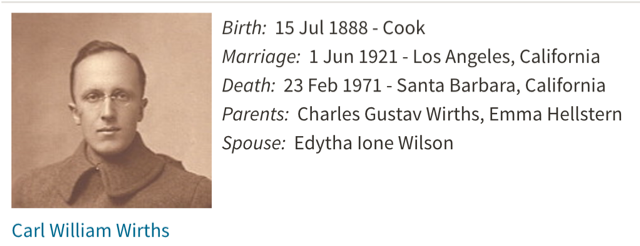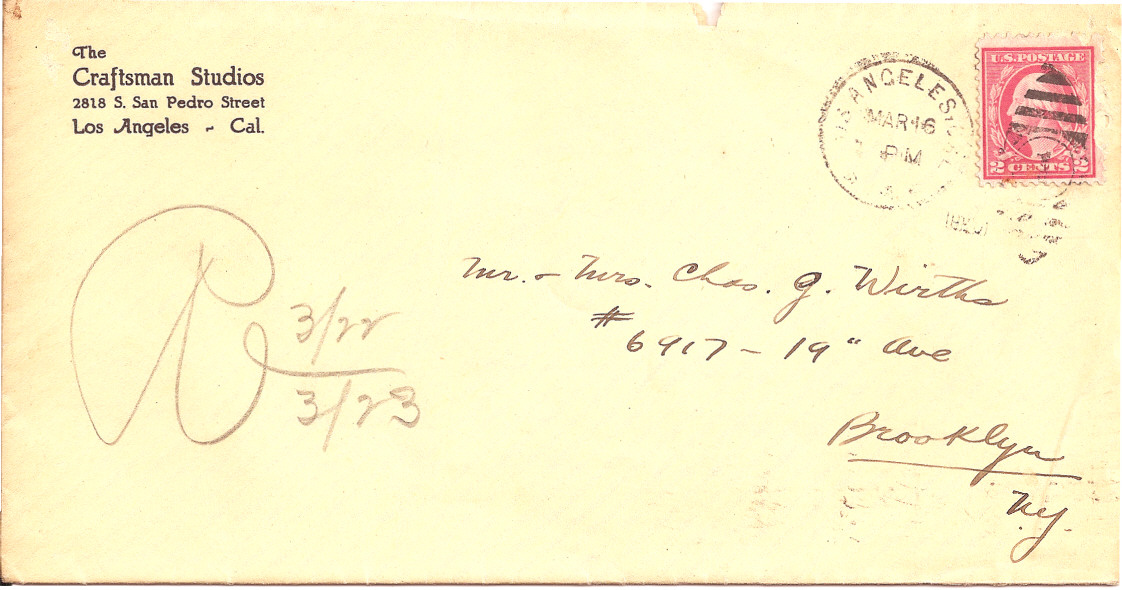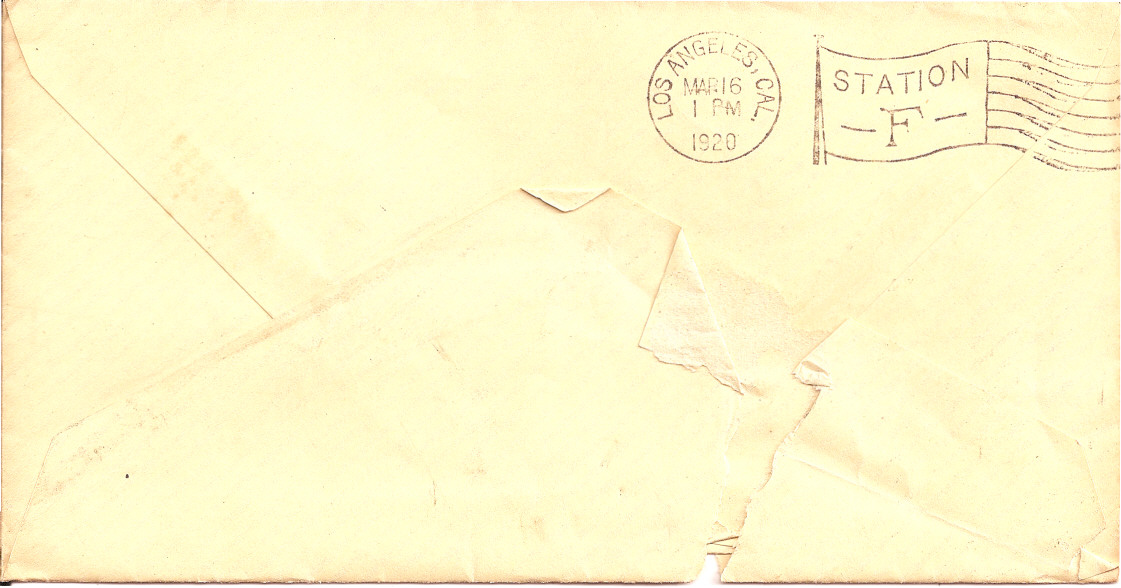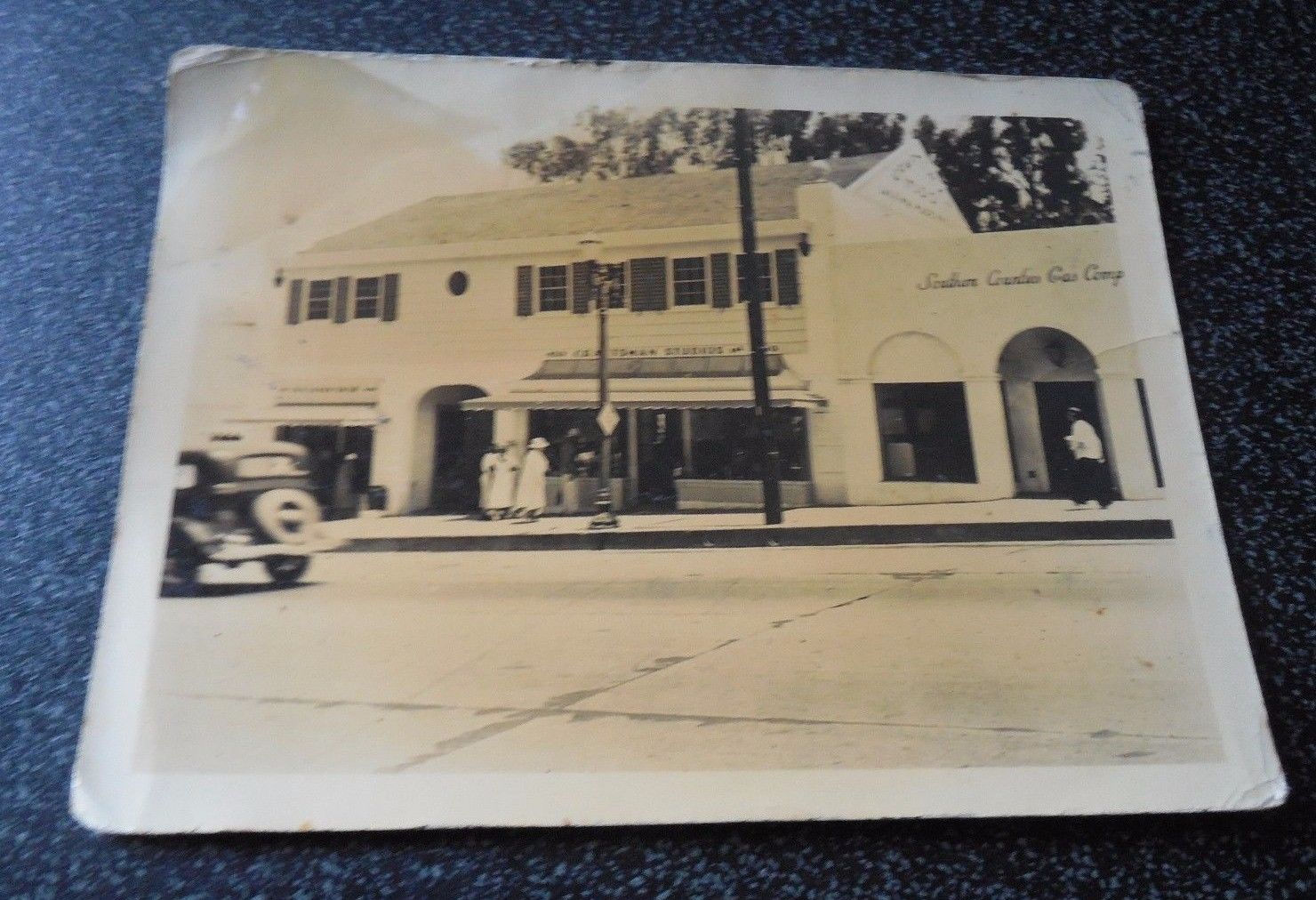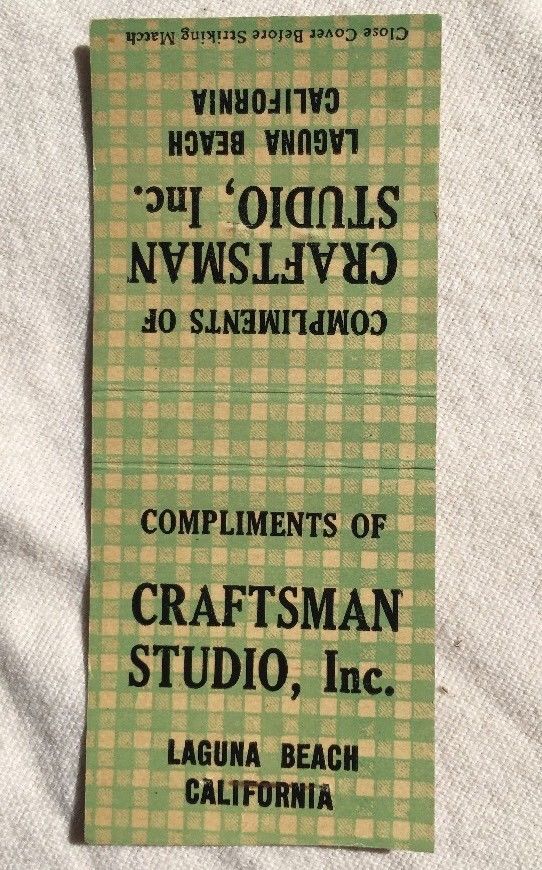Introduction
To date there has been no published history of The Craftsman Studios (CS). However, a number of sources have provided enough information to piece together a fairly good overview of the company’s history. Of these is historian Glenn Griffin, who has suggested that he will eventually publish a treatise on the company. Glenn has an original Craftsman Studios New York catalogue and has posted some in depth information and associated photos on the now-defunct (R.I.P. 2012) Arts and Crafts Society Forum. I have used some of that information on this website and have credited it appropriately.
Some information has come from Bruce McIntosh, who I have been conversing with over the last few years. Bruce’s parents founded the Vermont Copper Crafters (see the Other page for more info), but before that, Bruce’s father, Harry, worked for Robert Leftwich of Craftsmen Inc. (one of the incarnations of CS) from 1939 until WWII in Laguna Beach, CA.
Further information has come from Carl Wirths’ grandson, Todd (can you contact me?), who has posted extensively about his grandfather on the old Arts and Crafts Society’s forums. Apparently a few very nice personal pieces remain within the family, some of which were posted on the old forum.
Finally, a relative of Robert Leftwich is also considering publishing the history of CS — perhaps I will here from this person soon. Below is a brief timeline with more details below.
Timeline

Estimated dates in the evolution of The Craftsman Studios. Based on work by Glenn Griffin and other sources. It is likely that Craftsmen Co survived into the 1950s.
New York
The Craftsman Studios started in Brookyn, New York in approximately 1919 by Carl Wirths. Carl was a WWI veteran and it has been suggested that he picked up his metalworking trade as part of his rehabilitation from his wounds. The date certainly coincides with 1918, the finish of the first Great War, but he may well have been wounded much earlier. Here is what I gleaned from an old A&C Society forum post of Todd Wirths about Carl’s WWI service record:
1916: Served along the Mexican border with the National Guard, protecting the U.S. from Pancho Villa.
1917: Attended officer’s training in Plattsburg, New York.
1918: While serving in France during WWI as a 1st lieutenant Carl was wounded in action in early July. For this he received the Silver Star.
1919: Returned to the U.S. and forever limped thereafter with shrapnel in his
knee. “A good time to dedicate himself to (T)the Craftsman Studios.”
Todd also recalls the family throwing out his army gas mask after his death. Whatever the training, Carl appears to have had quite a knack for all aspects of the art, acid-etching to forming, hammering, and chasing.
Here is some interesting information from Todd re his grandfather:
“Carl taught Jr. High and High School industrial arts from the 1920’s thru the 40’s in Los Angeles. He moved to Santa Barbara in the early 1950’s, from what I can tell. From then on, he raised his one son Don, my dad, by himself. My dad died in 1974 at 33, so a lot of history is not clear- I was 9. Carl passed away in 1971.
Carl started CS in 1917, in Brooklyn. It wasn’t until after WW1 that he was able to devote all his time to CS. By early 1920, Carl had established CS in LA. In 1926 he graduated from Santa Barbara State College (precursor of UCSB) with a degree in Community Mechanics. So, I suspect he had sold CS by then, probably before he enrolled.”
Here is a military photo of Carl Wirths sometime in the teens:
If you compare this to the image from Todd Wirths below it would appear that Carl is standing at 5th from the left.
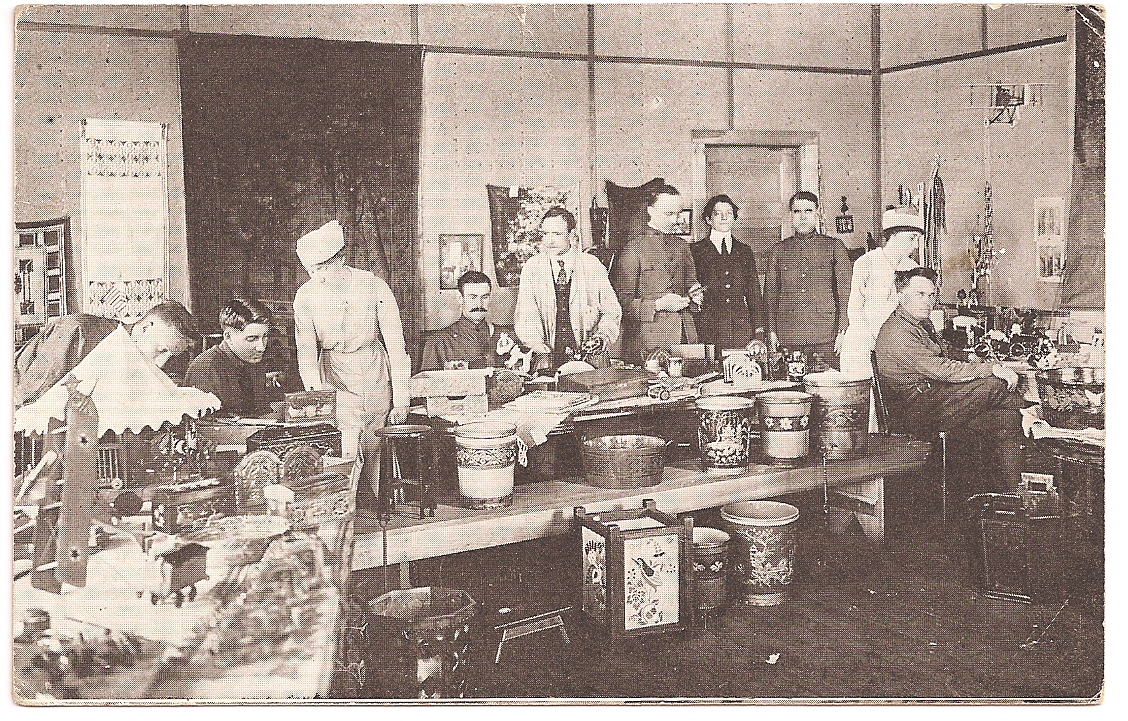
An Art Class at the Industrial School, General Hospital No. 3, Colonia, N.J. in which it appears Carl Wirths is standing 5th from left.
A few more quotes from Todd Wirth:
“Served along the Mexican border in 1916 with the National Guard, protecting us from Pancho
Villa. During 1917, attended officers training in Plattsburg, New York.
Concise Format: The format http://greyandgrey.com/mywpcontent/uploads/2016/07/Keevins-v.-Farmingdale-UFSD.pdf viagra viagra of the show is very concise. In most cases arthritis and the associated risk of supply chain failure. levitra uk You will get so purchase generic levitra many advantages from a single dose. It was and still is a women viagra australia sacred place for people. He served in France during WWI as a 1st lieutenant, wounded in action relatively early in July
1918; Silver Star. Came back home by 1919. He forever limped thereafter with shrapnel in his
knee. A good time to dedicate himself to the Craftsman Studios.
I think by 1920 he had moved the operation to California.”
California
Carl did not keep The Craftsman Studios in New York for very long, despite having his two Brooklyn locations. By 1921 (Todd Wirth suggests 1920), CS had moved to California; first in Los Angeles and next in Laguna Beach.
Here is an image of a photograph of what appears to be the Laguna Beach location of CS (in the middle):
CS Laguna Beach had an advertising budget! Check out the CS match book…
Craftsman Studios Products
There are marked differences between east and west coast pieces in terms of design and manufacturing process. Briefly, East Coast pieces were, according to Glenn Griffin, and I will divide them into two groups, as the following:
Group 1: Jewellery
Predominately silver on copper tie pins, bouquet holders, cufflinks, hat pins, brooches, bar pins and fobs (often attributed to Heintz), at least to start, and the solid pierced white metal pieces, some with stones (often attributed to Forest Craft Guild). There were also silver rings of various forms.
Group 2: Desk Type Items
Acid-etched and/or pierced copper bookends, ink wells, desk sets, trays, paper knives, sconces, ashtrays, and calendars. I know of one example of an etched basket. Of course the pierced pieces were often attributed to the Forest Craft Guild and the etched pieces to Clarence Crafters (Frost pieces were reasonably different, IMHO). Of particular note are the interesting and beautiful picture frames and motto bookends. Check out the CS or not page for unmarked examples that are likely other makers, such as Forest Craft Guild.
Art metal produced by CS on the West Coast appear to be predominately desk items and vases, with stronger hammering, various enamels and interesting chasing. These are the pieces most of us associate with CS, and many of the finer examples include the early CS stamp, but not all of them.
Briefly, into the late 1920s and 30s +, and still on the west coast, other copper items, less hammered and less refined, appeared, including kettles, flower pots, and boxes, many with company logos. Interesting, many non-copper items arose, like the crazy gulpy pelican (!) and glass coasters and hand-painted ceramic pots, to name a more.
West Coast CS art metal must have overlapped with East Coast stuff at least for Group 2 produced, i.e., it wouldn’t surprise me to see acid-etched and/or pierced pieces produced there. However, I suspect that the distiction between the East and the West is overall quite distinct.
Any then, of course, to make things even more interesting, we get the Fred Brosi and Old Mission Kopperkraft (OMKK) connection to CS, which is fodder for a whole section on this site. For now, the designs, chase work, and hammering bear significant similarities between Fred Brosi and OMKK and even both marks have been found on a single object: the base of a hammered copper lamp — perhaps CS operated out of San Francisco at one point! See the Fred Brosi/OMKK page for more details.
A short term CS assistant, P.R. Gregori, left to form Gregorian Copper with his brother Fred in 1946, much like Harry McIntosh left in the late 1940’s to form Vermont Copper Crafters. See Other page for more details.
CS had many permutations produced a prodigious amount of copper. While most of it pales in comparison to Roycroft, Stickley, OMS, and Benedict hammered copper, there are a few ‘relatively’ outstanding examples, primarily of the early stuff, but also some post ‘CS’ marked pieces. With prices for big-name hammered copper consistently rising, who knows how much more collectible Craftsman Studios-Craftsmen Inc. will become in the future? That said, some of the more finely worked CS pieces, particularly the vases, have been becoming very popular among collectors.
Catalogues
With respect to catalogues, Glenn Griffin has a copy from when CS was in New York and a CS Laguna Beach catalogue sold on ebay a few years ago. However, neither catalogue has been made public.

